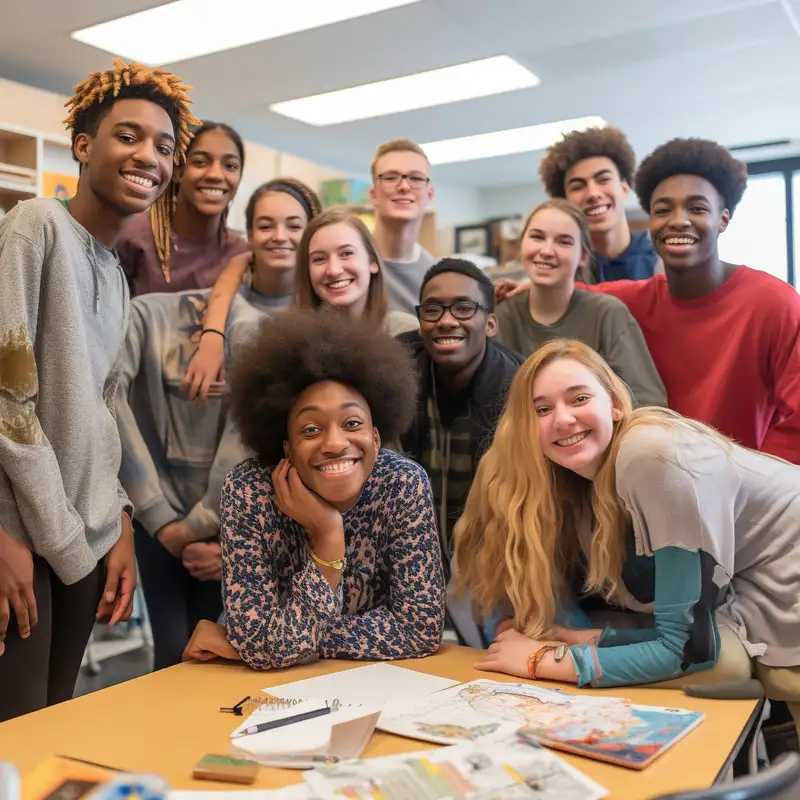Season 1 Episode 5: What is the STEAM education framework?
Welcome to the fifth episode of "EdTechVerse" podcast, where we share more about the STEAM education framework.
You've probably heard of STEM education, which stands for Science, Technology, Engineering, and Mathematics. STEAM builds upon this concept by adding an "A" for the Arts. This educational approach aims to integrate the arts, including visual arts, music, creative writing, theater, and design, into the STEM curriculum to create a more holistic and interdisciplinary learning experience.
The development of STEAM education has been influenced by many exceptional individuals, such as Sir Ken Robinson, Dr. Mae Jemison, John Maeda, Ayanna Howard, Mitchel Resnick and Georgette Yakman. These pioneers have helped shape a more inclusive, creative, and interdisciplinary approach to learning, inspiring students and educators alike to embrace the full spectrum of human potential.
The seminal 2006 Tedtalk by Sir Ken Robinson, a British author, speaker and international advisor on education has reputedly been viewed by 380 million people in 160 countries, influencing schools around the world. His wit and humour complimented the key message of the 19-minute address without notes at an educational conference in California. Schools should have the discretion to encourage creativity in children by not treating children as the same or over-programming them. Children find their talents and hone their skills by trying things out.
Here’s a story, “The Little Boy” by Helen Buckley
“Once a little boy went to school.
One morning
The teacher said:
"Today we are going to make a picture."
"Good!" thought the little boy.
He liked to make all kinds;
Lions and tigers,
Chickens and cows,
Trains and boats;
And he took out his box of crayons
And began to draw.
But the teacher said, "Wait!"
"It is not time to begin!"
And she waited until everyone looked ready.
"Now," said the teacher,
"We are going to make trees."
"Good!" thought the little boy,
He liked to make tall ones
With his pink and orange and blue crayons.
But the teacher said "Wait!"
"And I will show you how."
And it was green, with a brown trunk.
"There," said the teacher,
"Now you may begin."
The little boy looked at his teacher's tree
Then he looked at his own tree.
He liked his tree better than the teacher's
But he did not say this.
He just turned his paper over,
And made a tree like the teacher's.
It was green, with a brown trunk.
On another day
The teacher said:
"Today we are going to make something with clay."
"Good!" thought the little boy;
He liked clay.
He could make all kinds of things with clay:
Snakes and snowmen,
Elephants and mice,
Cars and trucks
And he began to pull and pinch
His ball of clay.
But the teacher said, "Wait!"
"It is not time to begin!"
And she waited until everyone looked ready.
"Now," said the teacher,
"We are going to make a dish."
"Good!" thought the little boy,
He liked to make dishes.
And he began to make some
That were all shapes and sizes.
But the teacher said "Wait!"
"And I will show you how."
And she showed everyone how to make
One deep dish.
"There," said the teacher,
"Now you may begin."
The little boy looked at the teacher's dish;
Then he looked at his own.
He liked his better than the teacher's
But he did not say this.
He just rolled his clay into a big ball again
And made a dish like the teacher's.
It was a deep dish.
And pretty soon
The little boy learned to wait,
And to watch
And to make things just like the teacher.
And pretty soon
He didn't make things of his own anymore.
Do you have a similar story to tell? Or do you know of anyone with similar experiences? Standardisation has its merits as it equalises the playing field. It also provides consistent benchmarks for different batches of students in different parts of the country, in different countries around the world.
Maybe it’s time for advances in education theory and practice to be empowered by advances in technology? Let’s move the needle towards personalised, student-centered learning for the masses and celebrate diversity in the human potential spectrum.
We hope today's EdTechVerse episode on the STEAM education framework sparked your curiosity about an interdisciplinary approach to education. Join us in the next episode as we talk about Lego STEAM park.
As always, stay curious, and keep learning!

